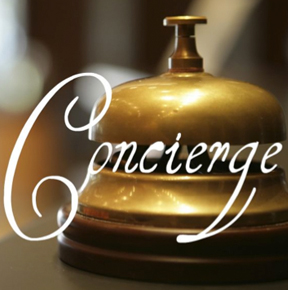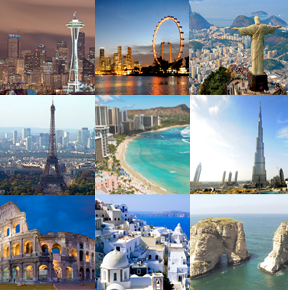Maximum number of guests: 8
Duration: 8 – 9 hours
From Cherbourg, two itinerary options:
Option 1: Utah Beach & Sainte-Mère-Eglise
Utah Beach & Sainte-Mère-Eglise is the westernmost beach of the five landing areas of the Normandy Invasion of World War II. It was assaulted on June 6, 1944 (D-Day of the invasion), by elements of the U.S. 4th Infantry Division and was taken with relatively few casualties. In the predawn hours of D-Day, units of the 82nd and 101st airborne divisions were airdropped inland from the landing beach. They suffered many casualties from drowning and enemy fire but succeeded in their aim of isolating the seaborne invasion force from defending German units.
Option 2: Omaha beach & Pointe du Hoc & US Cemetery
Omaha Beach was the most intensely fought after beach on D-Day on June 6th 1944. Omaha Beach was six miles wide – the largest of all the five beaches. The whole of the beach at Omaha was overlooked by cliffs which made attacking the area very difficult. The Americans were given the task of doing just this.
The Germans had built formidable defences around Omaha. Rommel had built many of his ‘dragon’s teeth’ on the beach which were designed to take out the base of landing craft – and for good measure, the ‘teeth’ were also mined. Heavily fortified ‘resistance nests’ had been built on top of the cliffs and most German positions were connected by a system of trenches to allow for better movement of personnel. Gun emplacements had been designed to cover the beach.
From Le Havre, 4 itinerary options:
Option 1: The British experience on D-Day (Pegasus Bridge & Sword Beach)
Pegasus Bridge, the airborne assault of the Orne bridges by Major Howard and his men, first allied action on D-Day! Sword Beach and the landing of the 3rd British Infantry division and of the 1st Special Service Brigade (British and french commandos)
Option 2: Juno Beach & Canadian Cemetery
The Juno Beach Centre is Canada’s Second World War museum and cultural centre located in Normandy, France. The Centre pays homage to the 45,000 Canadians who lost their lives during the War, of which 5,500 were killed during the Battle of Normandy and 359 on D-Day. Opened in 2003 by veterans and volunteers with a vision to create a permanent memorial to all Canadians who served during the Second World War, the Centre’s mandate is to preserve this legacy for future generations through education and remembrance.
The Canadian Cemetery at Beny-sur-Mer/Reviers: Many of those buried in Beny-sur-Mer Canadian War Cemetery were men of the 3rd Canadian Division who died either on 6 June or during the early days of the advance towards Caen, when the Division engaged a German battle group formed from the 716th Division and the 21st Panzer Division.
Option 3: Gold beach & Arromanches’ Artifical Harbour
Gold Beach, the center beach of the five designated landing areas of the Normandy Invasion of World War II. It was assaulted and taken from defending German troops on June 6, 1944 (D-Day of the invasion), by units of the British 50th Infantry Division.
Mulberry, either of two artificial harbours designed and constructed by the British in World War II to facilitate the unloading of supply ships off the coast of Normandy, France, immediately following the invasion of Europe on D-Day, June 6, 1944. One harbour, known as Mulberry A, was constructed off Saint-Laurent at Omaha Beach in the American sector, and the other, Mulberry B, was built off Arromanches at Gold Beach in the British sector. Each harbour, when fully operational, had the capacity to move 7,000 tons of vehicles and supplies per day from ship to shore.
Option 4: Omaha beach & Pointe du Hoc & US Cemetery
Omaha Beach, was the second beach from the west among the five landing areas of the Normandy Invasion of World War II. It was assaulted on June 6, 1944 (D-Day of the invasion), by units of the U.S. 29th and 1st infantry divisions, many of whose soldiers were drowned during the approach from ships offshore or were killed by defending fire from German troops placed on heights surrounding the beach.
An ominous piece of land jutting into the English Channel, Pointe du Hoc provided an elevated vantage point from which huge German guns with a range of 25 km (15 miles) could deliver fire upon both Omaha Beach (7 km, or 4 miles, to the east) and Utah Beach (11 km, or 7 miles, to the west).
Prices include your personal guide and vehicle for up to 8 guests.
Please note: Lunch and entrance fees to the museums are not included in the price.
Prices starting from Cherbourg is 850,00 Euros for your group of up to 8 guests
Prices starting from Le Havre is 990,00 Euros for your group of up to 8 guests







